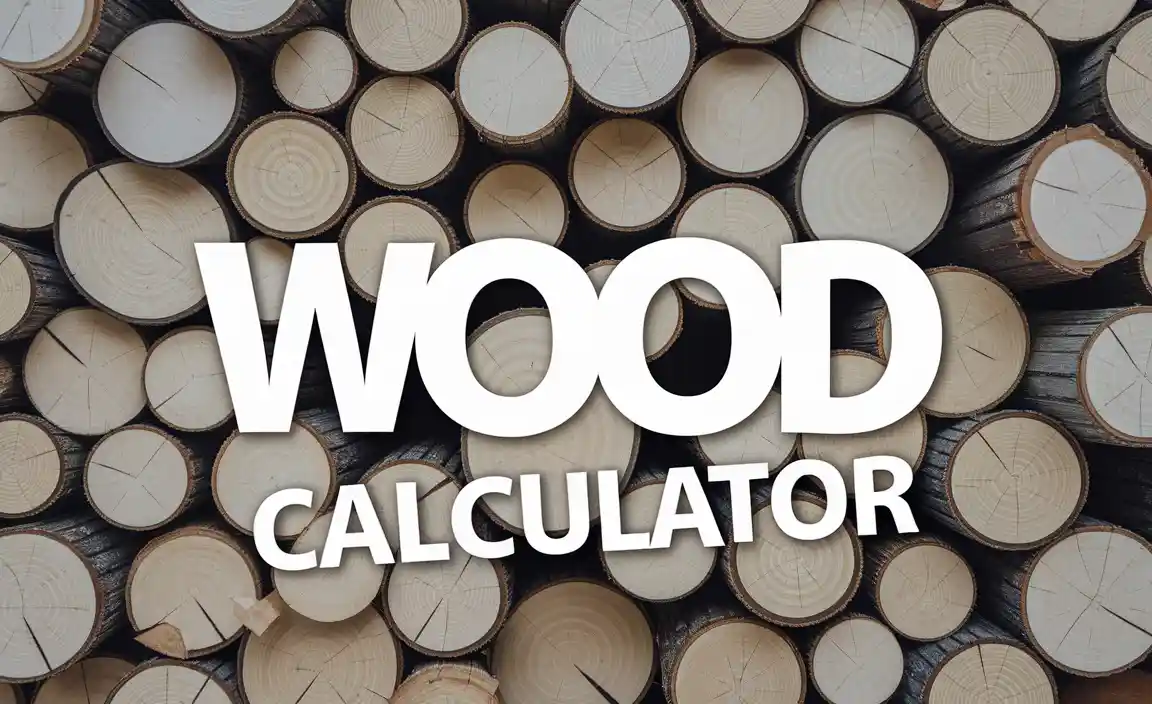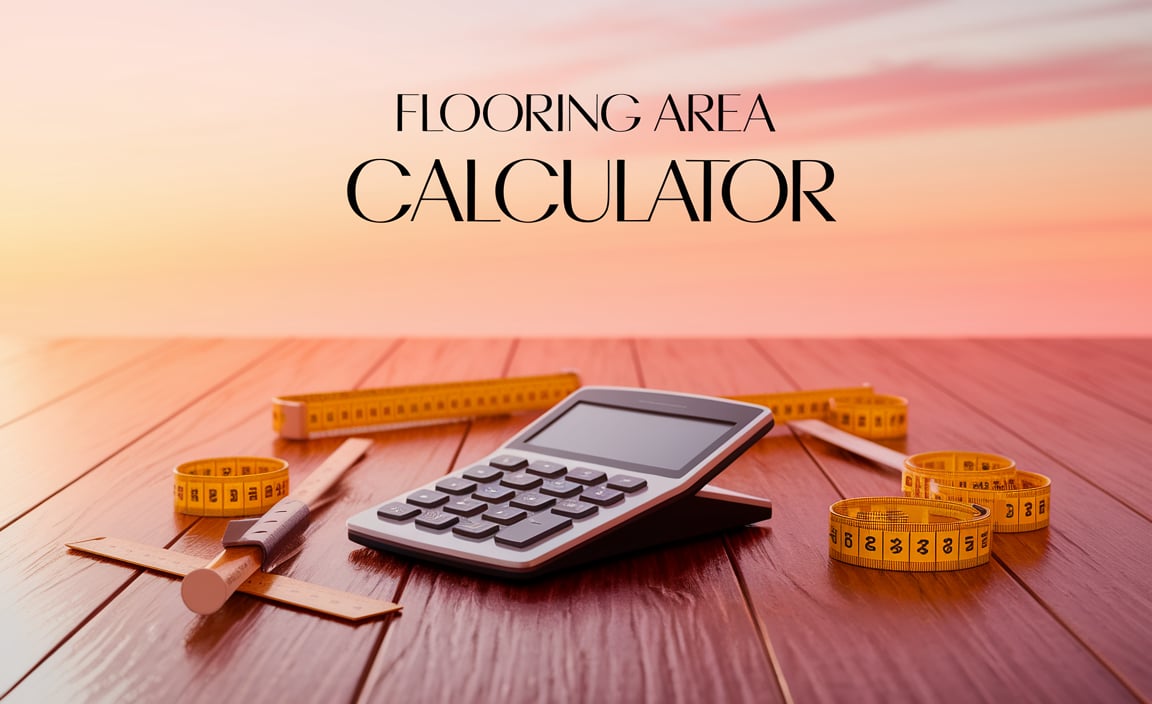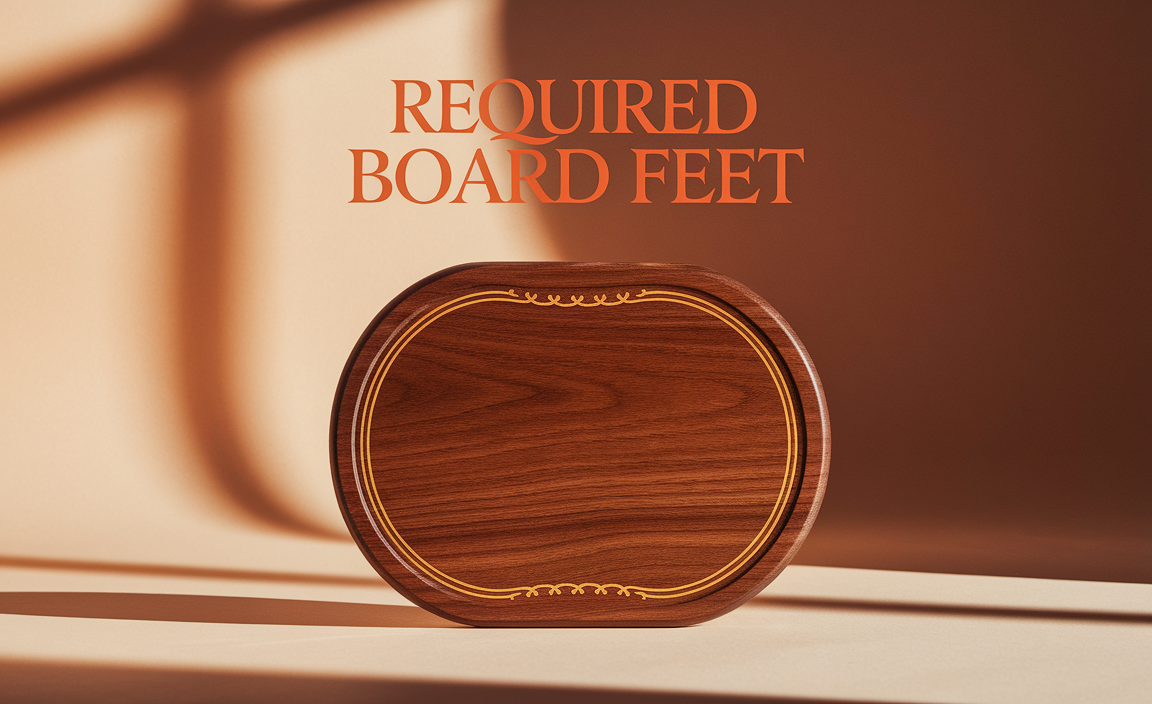Have you ever wondered how much space something takes up? It’s a common question! Whether you’re planning a move or organizing your room, knowing how to measure space can help. That’s where a cubic feet calculator comes in handy.
A cubic feet calculator helps you find the volume of a space easily. This simple tool can make packing boxes or arranging furniture a breeze. Imagine trying to fit all your toys into a box. Without knowing the box’s size, it could turn into a frustrating puzzle!
Did you know that one cubic foot can hold about 7.5 gallons of water? That’s like filling a big suitcase with liquid! Understanding these measurements can open up a world of possibilities.
Ready to learn how to use a cubic feet calculator? This guide will show you how to find the right measurements and make life a little easier. Let’s dive in and discover the magic of space measurement together!
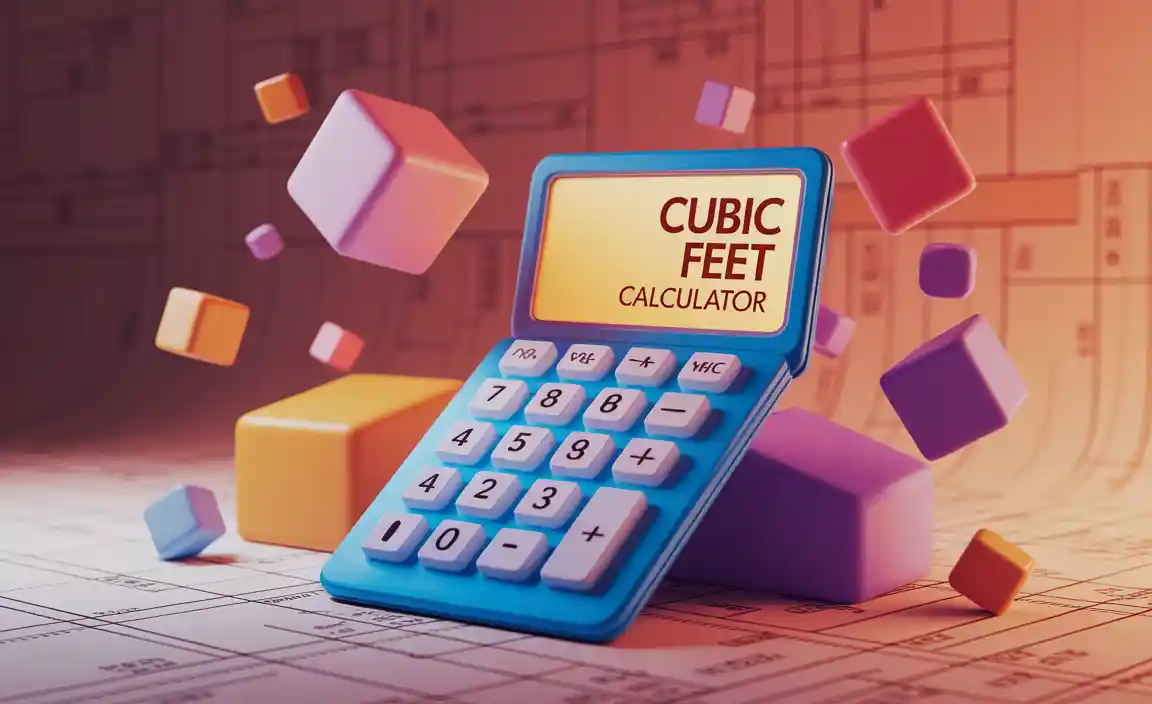
Table of Contents
Understanding The Cubic Feet Calculator: Your Essential Guide
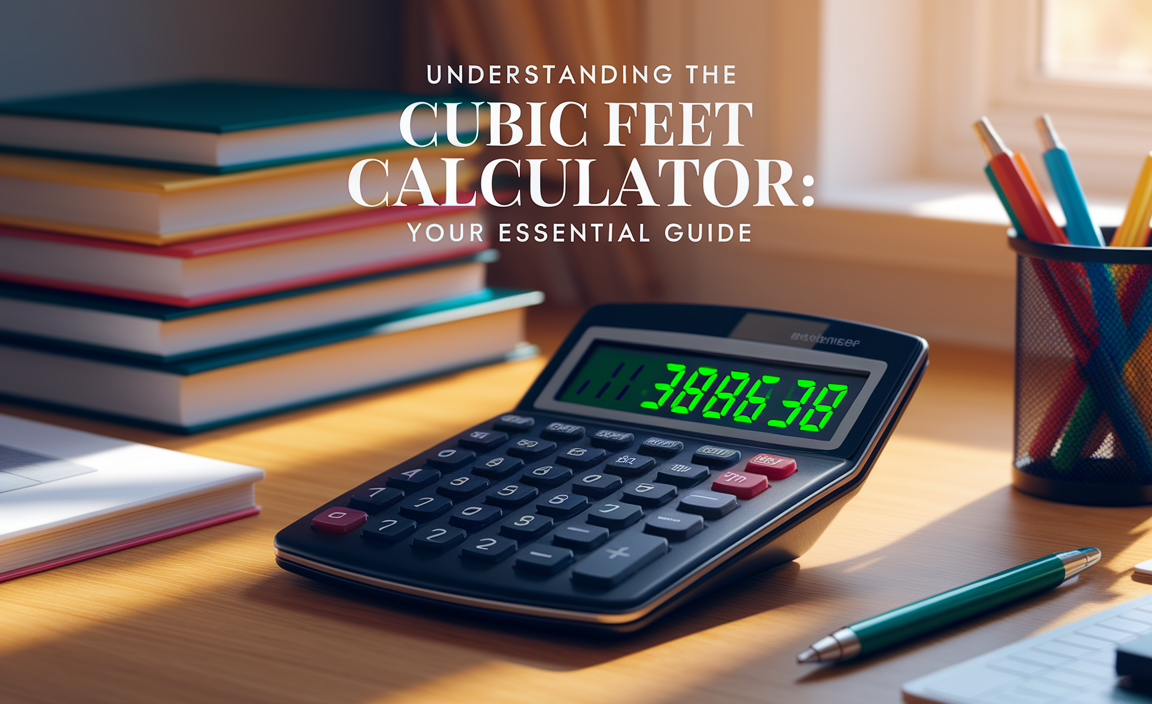
Curious about how to measure space? A Cubic Feet Calculator helps you find the volume of objects quickly. It can be useful for packing boxes, knowing how much furniture fits, or even ordering materials. Simply input the length, width, and height, and voilà! You get the volume in cubic feet. Did you know that understanding cubic feet can save you time and money when moving? It’s a small tool that makes a big difference in everyday life.
What is a Cubic Feet Calculator?
Definition and purpose of a cubic feet calculator. Importance of measuring volume in various contexts.
A cubic feet calculator is a handy tool that helps you find out how much space something takes up. Need to pack a moving truck or measure your fish tank? This calculator is your new best friend! Understanding volume is important in many areas, like construction and shipping. It makes sure items fit perfectly without leaving too much extra space, like wearing shoes two sizes too big!
| Context | Importance |
|---|---|
| Moving | Helps organize boxes effectively |
| Gardening | Determines soil and plant space |
| Shipping | Maximizes space and saves money |
How to Use a Cubic Feet Calculator

Stepbystep instructions for using the calculator. Example measurements and calculations.
Ready to make math magic with a cubic feet calculator? First, grab your measuring tape. Measure the length, width, and height of your space in feet. Next, multiply these numbers together. That’s your volume! If you want to see it laid out, check out the simple chart below:
| Measurement | Value (Feet) |
|---|---|
| Length | 5 |
| Width | 3 |
| Height | 4 |
So, if you multiply 5 x 3 x 4, you get 60 cubic feet. See? Math can be fun! And now you can show off your new skills at parties. Who knew cubic feet could bring so much joy?
Key Formulas for Calculating Cubic Feet
Discussion of the cubic foot formula: Length x Width x Height. Variations for different shapes (cubes, rectangular prisms, cylinders).
To find the space inside something, use the magic formula: Length x Width x Height. It’s like a recipe for cubic feet! For cubes, it’s easy; all sides are the same. Just multiply one side three times. Rectangular prisms? Same formula, but with different sizes for length, width, and height. Cylinders are a bit tricky. Use the area of the circle (πr²) and then multiply by the height. Here’s a fun table to sum it up:
| Shape | Formula |
|---|---|
| Cube | L x L x L |
| Rectangular Prism | L x W x H |
| Cylinder | πr² x H |
Now you can calculate the space like a pro! Who knew geometry could be this fun? Remember, measuring like Goldilocks ensures everything fits just right!
Applications of Cubic Feet Calculators
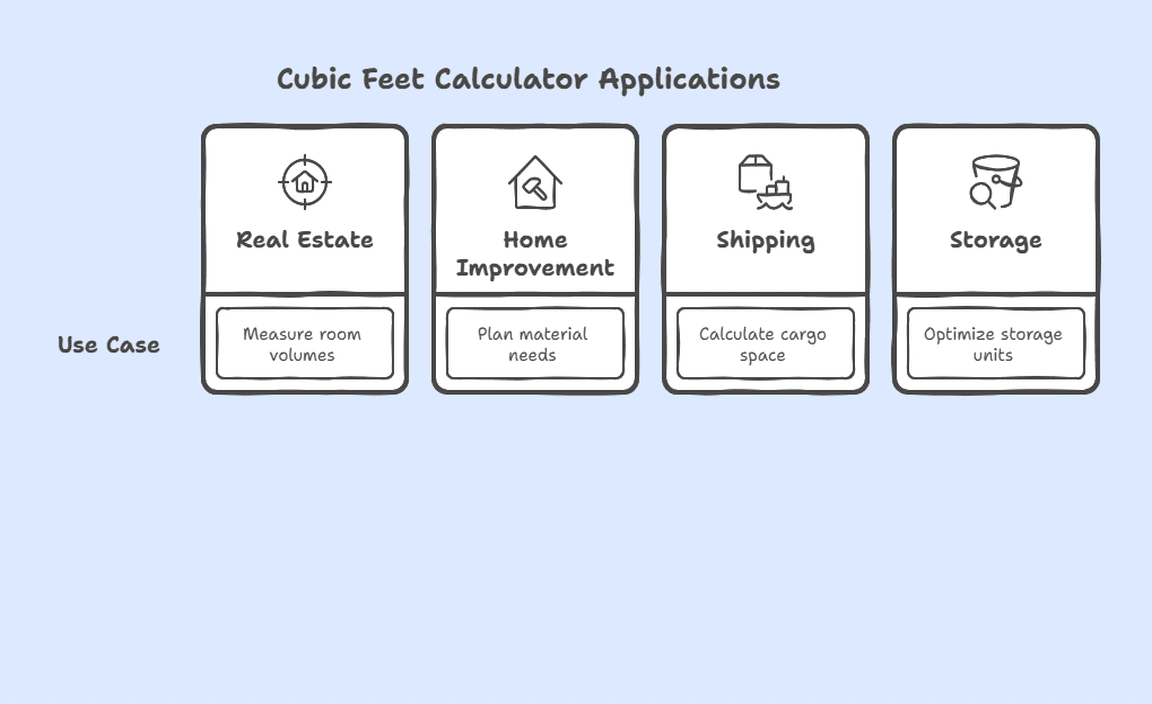
Uses in real estate and home improvement projects. Applications in shipping, storage, and logistics.
Cubic feet calculators are useful in many areas. In real estate, they help measure space in homes. This aids buyers in understanding room sizes. For home improvement, knowing cubic feet helps in planning renovations. It ensures you buy the right amount of materials.
In shipping and logistics, these calculators also play a major role. They help determine how much cargo fits in a truck or container.
- Real Estate: Measure room volumes.
- Home Improvement: Plan material needs.
- Shipping: Calculate cargo space.
- Storage: Optimize storage units.
How is a cubic feet calculator beneficial?
It helps you avoid buying too much or too little material. This saves money and time on projects!
Common Mistakes to Avoid When Calculating Cubic Feet
Miscalculating dimensions: tips on measurement accuracy. Using incorrect units of measurement and conversions.
Measuring for cubic feet can be trickier than you think! First, always double-check your dimensions. It’s easy to accidentally measure in inches instead of feet—oops! Using the wrong units can lead to big surprises, like thinking you bought enough space for a giraffe but only enough for a hamster. Converting units? Make sure you’re clear on what you need! Below is a handy size comparison table to keep you on track:
| Unit | Feet | Inches | Conversion |
|---|---|---|---|
| 1 | 1 | 12 | 1 ft = 12 in |
| 2 | 2 | 24 | 2 ft = 24 in |
| 3 | 3 | 36 | 3 ft = 36 in |
So remember, pay attention to those little details. They can save you from cubic foot disasters down the road!
Frequently Asked Questions About Cubic Foot Calculations
Addressing common queries and misconceptions. Enabling users to troubleshoot calculation issues.
Many people have questions when it comes to calculating cubic feet. One common query is about conversion. If you’re wondering how to change inches to feet, remember: there are 12 inches in a foot! So just divide the number of inches by 12. Another issue is sometimes folks mix up the formula. Don’t worry! It’s easy! You need to know the length, width, and height, then multiply them together. If you’re feeling confused, try using a cubic feet calculator to help you out. It’s like having a math buddy who won’t judge your math skills!
| Common Questions | Answers |
|---|---|
| How do I convert inches to feet? | Divide by 12! |
| What do I multiply? | Length x Width x Height! |
| Can’t I just guess? | Only if you love surprises! |
Additional Resources and Tools for Volume Measurement

Recommendations for apps and software to assist in calculations. Links to instructional videos and tutorials for deeper learning.
Finding the right tools to measure volume can be a breeze with today’s technology. There are several handy apps and software designed for quick calculations. Some popular ones include Volume Calculator Pro and MeasureKit. They make measuring fun, like a game! Don’t forget to check out YouTube for great tutorials on how to use these tools effectively. Who knew learning could involve so much clicking and tapping? Here’s a quick table to help you pick the best options:
| App/Software | Features | Link |
|---|---|---|
| Volume Calculator Pro | Easy volume calculations | Visit |
| MeasureKit | AR measuring tool | Visit |
So gear up and pick your favorite tool! Measuring volume just got a whole lot easier and more fun!
Conclusion
In conclusion, a cubic feet calculator helps you find volume easily. You can measure items like boxes or rooms. Knowing this can help with packing, moving, or using space wisely. Try using a calculator online for quick results. We encourage you to explore more about volume measurements for better understanding. It’s a useful skill to have!
FAQs
How Do You Calculate The Volume Of An Object In Cubic Feet Using Its Dimensions?
To find the volume of an object, you need to know its length, width, and height. First, measure each side. Then, multiply the length by the width and height together. The answer you get will be in cubic feet. That’s how much space the object takes up!
What Is The Formula To Convert Measurements From Cubic Inches To Cubic Feet?
To convert cubic inches to cubic feet, you use a simple formula. First, remember that there are 1,728 cubic inches in one cubic foot. So, you divide the number of cubic inches by 1,728. For example, if you have 3,456 cubic inches, you divide 3,456 by 1,728 to find out how many cubic feet that is.
How Do You Determine The Cubic Feet Of Irregularly Shaped Objects?
To find the cubic feet of an irregularly shaped object, you can use water. First, fill a container with water and note the level. Then, carefully submerge the object in the water. The water level will rise. Measure the new water level and subtract the original level. This difference tells you the cubic feet of the object!
What Tools Or Calculators Are Available To Assist In Calculating Cubic Feet For Large Projects?
You can use online calculators to find cubic feet easily. Many websites offer free tools. You just input the length, width, and height of your project. You can also use measuring tape and do the math with a pen and paper. Some smartphone apps help you calculate cubic feet, too!
How Can Understanding Cubic Feet Measurements Help In Storage And Packing Efficiently?
Understanding cubic feet helps us know how much space we have. When packing, we can fit items better. You can see how many boxes fit in a storage area. This way, we use every inch wisely and avoid wasting space. It makes moving and storing things easier!
Resource:
-
Volume measurement basics: https://www.britannica.com/science/volume-measurement
-
How to read a tape measure: https://www.familyhandyman.com/project/how-to-read-a-tape-measure/
-
Understanding geometric shapes: https://www.khanacademy.org/math/geometry-home
-
Efficient storage strategies: https://www.containerstore.com/blog/posts/top-5-tips-for-using-your-space-efficiently

